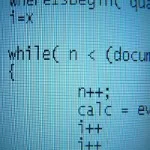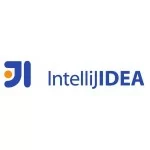Quantum Error Correction in 2025: Progress and Persistent Challenges
Quantum computers hold immense potential, but their greatest weakness is their susceptibility to errors. Unlike classical bits, quantum bits (qubits) are fragile, easily disturbed by environmental noise, imperfect control pulses, and even the act of measurement itself. To build a practical, large-scale quantum computer, robust error correction is essential—yet in 2025, implementing these methods remains one of the field’s most daunting challenges.
1. The Need for Quantum Error Correction
In classical computing, errors are easily managed with simple redundancy—repeating a calculation or storing multiple copies of data. Quantum information, however, cannot be copied due to the no-cloning theorem, and any attempt to directly measure a qubit collapses its state. Instead, quantum error correction (QEC) relies on encoding logical qubits across many physical qubits, using clever algorithms to detect and fix errors without destroying quantum coherence.
The ultimate goal is fault-tolerant quantum computation, where errors are suppressed enough to allow arbitrarily long calculations. But in 2025, despite remarkable theoretical progress, real-world implementation is still in its infancy, bottlenecked by hardware limitations and the sheer complexity of managing quantum redundancy.
2. Leading Quantum Error Correction Strategies in 2025
1. Surface Codes: The Near-Term Frontrunner
The most promising approach today is the surface code, a type of topological quantum error correction that arranges qubits in a two-dimensional lattice. By performing repeated “syndrome measurements” (checks for errors without collapsing the quantum state), surface codes can detect and correct both bit-flip and phase-flip errors.
Why is it leading?
- It has a relatively high error threshold (~1% per gate operation), meaning physical qubits don’t need to be impossibly perfect.
- It works well with nearest-neighbor interactions, making it feasible for superconducting and trapped-ion qubits.
The Catch?
- Massive qubit overhead: A single logical qubit might require 1,000 to 10,000 physical qubits, depending on error rates.
- Slow operations: Error correction cycles introduce latency, complicating real-time computation.
In 2025, experimental demonstrations have shown small logical qubits with improved lifetimes, but scaling to hundreds or thousands of logical qubits—necessary for practical applications—remains out of reach for current hardware.
2. Beyond Surface Codes: Color Codes and LDPC Codes
While surface codes dominate, researchers are exploring alternatives that could reduce overhead or improve computational efficiency.
- Color codes are similar to surface codes but allow for transversal gates—meaning certain quantum operations can be performed directly on logical qubits without extra error-prone steps. However, they require more complex qubit connectivity, which is difficult to engineer in today’s devices.
- Low-Density Parity-Check (LDPC) codes, borrowed from classical error correction, promise better qubit efficiency but demand long-range interactions between qubits—something most quantum processors lack.
In 2025, small-scale experiments have validated these approaches, but they are not yet competitive with surface codes for near-term deployment.
3. Bosonic Codes: Encoding Quantum Information in Light
Rather than relying on discrete qubits, bosonic codes store quantum information in the continuous states of light or microwave resonators. Two leading candidates are:
- Cat codes, which use superpositions of coherent light states (like Schrödinger’s cat being both alive and dead).
- GKP (Gottesman-Kitaev-Preskill) codes, which correct small shifts in position and momentum, making them resilient against common noise sources.
Advantages:
- Fewer physical components needed compared to multi-qubit schemes.
- Naturally resistant to certain types of errors.
Challenges:
- Extremely demanding measurement precision.
- Difficult to integrate with traditional qubit-based processors.
In 2025, bosonic codes have seen experimental success in quantum communication and memory, but their use in full-scale computation is still limited.
4. The Elusive Dream: Topological Quantum Error Correction
The most revolutionary—but also most speculative—approach is topological quantum computing, where qubits are encoded in exotic particles called anyons (like Majorana fermions) that are naturally resistant to errors due to their quantum properties.
Why is it appealing?
- Errors are suppressed by physical laws, not just software.
- Could enable near-perfect logical qubits with minimal overhead.
The Reality in 2025:
Despite years of research, stable, scalable topological qubits have not yet been conclusively demonstrated. Microsoft’s Majorana-based qubit project has faced experimental setbacks, and while other anyon-based systems (like those in certain fractional quantum Hall devices) show promise, they remain confined to lab experiments.
3. The Road Ahead: When Will Quantum Error Correction Become Practical?
As of 2025, quantum error correction is no longer just a theoretical exercise—small logical qubits have been demonstrated in labs, and companies like IBM, Google, and Quantinuum are actively working toward fault-tolerant systems. However, major hurdles remain:
- Qubit quality and scalability: Even the best qubits today have error rates near the threshold for surface codes, meaning millions of physical qubits may be needed for useful computations.
- Control complexity: Managing thousands of qubits with real-time error correction requires breakthroughs in classical control systems.
- New architectures: Photonic, neutral-atom, or topological qubits may eventually surpass superconducting and trapped-ion systems, but they are not yet mature.
4. Conclusion: A Necessary but Arduous Journey
Quantum error correction is the bridge between today’s noisy, small-scale quantum processors and the fault-tolerant quantum computers of the future. In 2025, we are closer than ever, but the engineering challenges are immense. The next decade will likely see a race between improving physical qubits, optimizing error correction schemes, and discovering entirely new approaches—bringing us step by step toward the era of reliable quantum computation.



